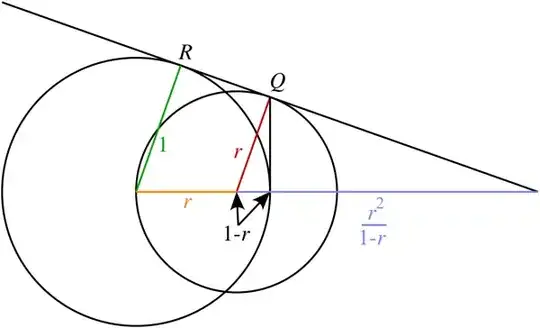Q) A circle $C_{1}$ is drawn having point P on x-axis as its centre and passing through the centre of the circle $C:x^2 +y^2=1$. A common tangent to $C_{1}$ and $C$ touches the circles at Q and R respectively . Then $Q(x,y)$ always satisfies $x^{2}=\lambda $ , then find $\lambda$ ?
Attempt
Let $(p,0) $ be the centre of $C_1$ then we have $C_1 = x^2 +y^2 -2px=0$.
Let $R=(x_1 ,y_1 )$ and $Q=(x_2 , y_2 )$
Then I wrote the equation of tangents of both circles and equated them and got
$\frac{1}{p}=x_1 + x_2$
How do I proceed? Hints?


"common tangent to C1C1 and CC intersects the circles at Q and R" i think this would be better worded as > "common tangent to C1C1 and CC touches the circles at Q and R". The intersects word is inappropriate imo.
– Gaurang Tandon Nov 13 '15 at 15:59